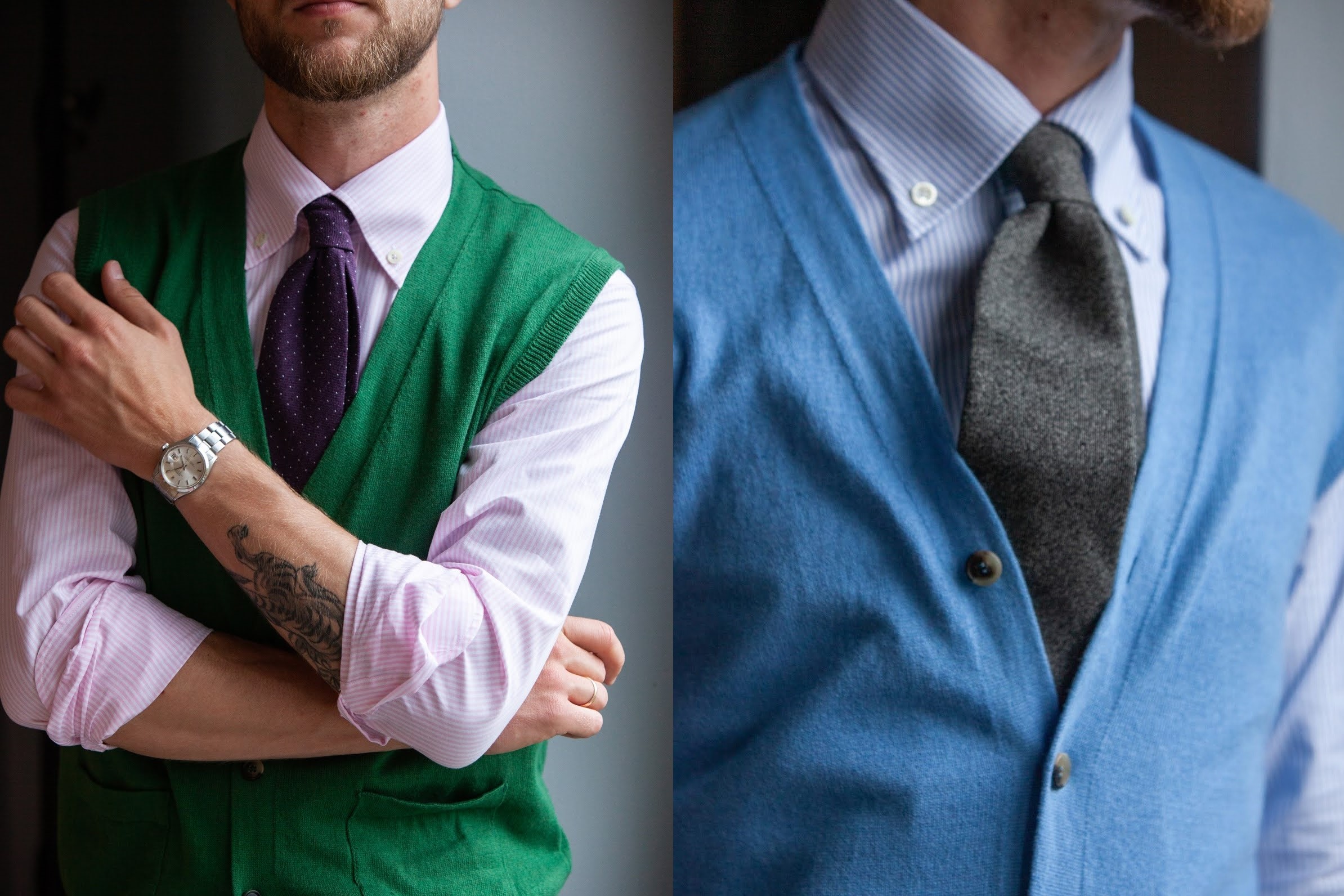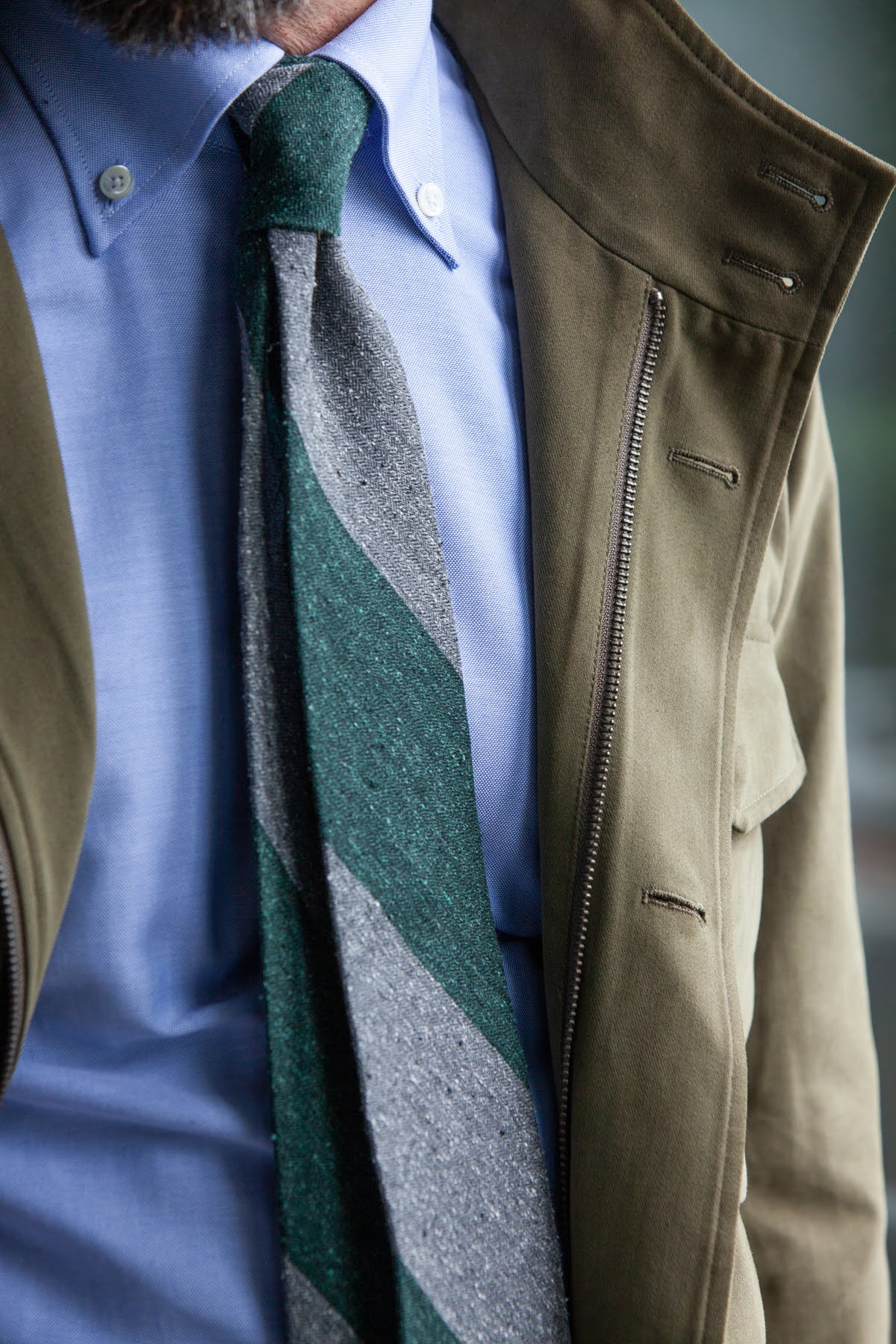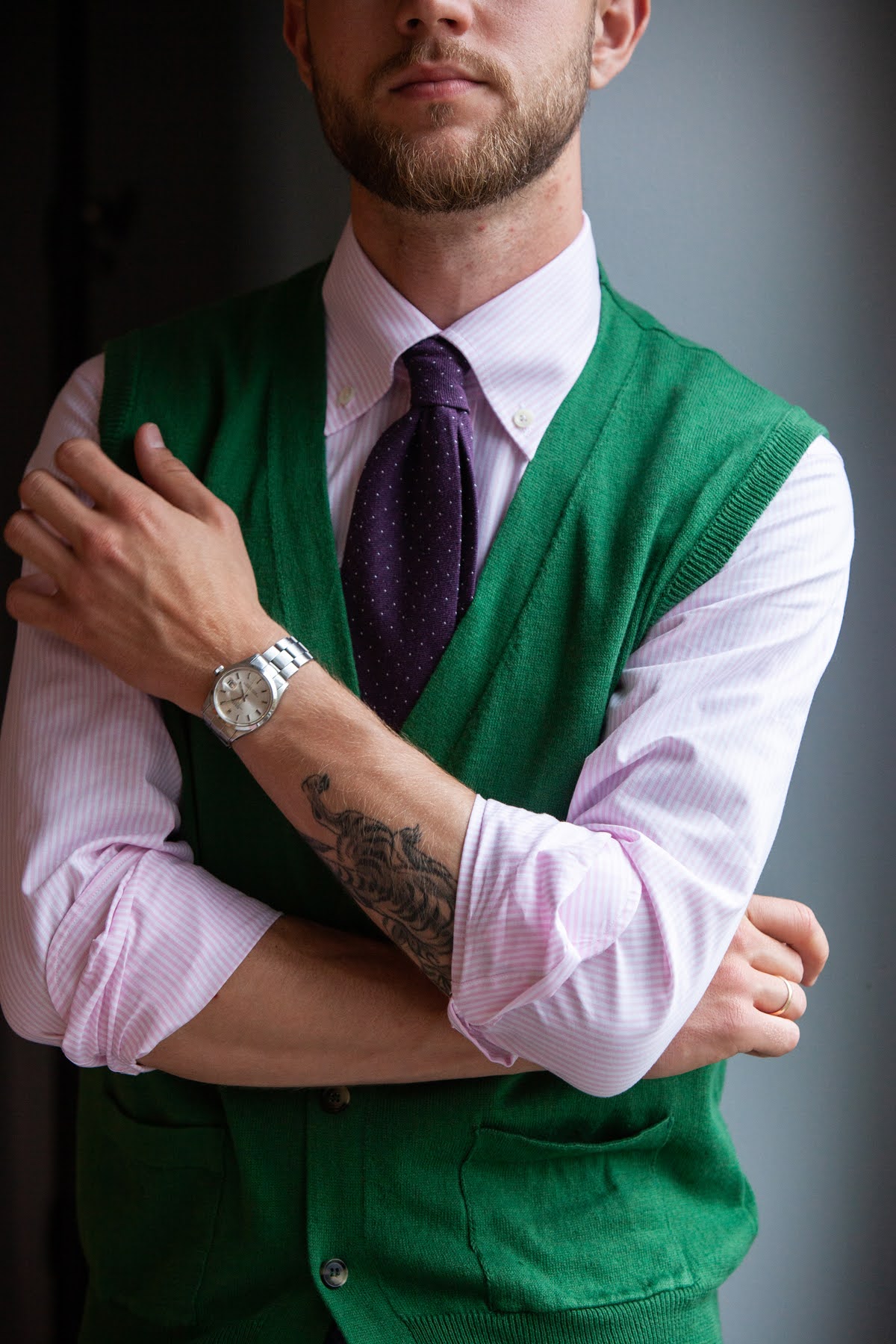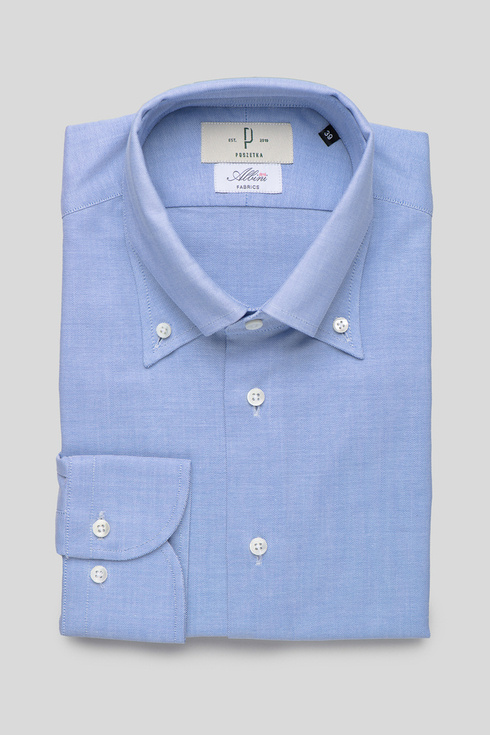Details Matter: the OCBD Story

I’ve been absolutely sure I had already touched a similar topic here on Everyday Classic blog - however, it seems I didn’t! There is nothing else for me to do but to catch up on that, so have a read now. A long one.
When I had the opportunity to see (and touch!) the new OCBDs before their official launch, two thoughts came on my mind:
● they all looked like things from my own closet (5 out of 6 were almost exactly the same!) - and that's a huge compliment,
● someone in Poland has at last done it right - and, well, that’s an even bigger compliment!

Well, I couldn’t. It turned out there is no such basic text!
Well, that's okay, my bad. It turned out for good - I had to compensate for two ideas into one text, probably a bit more inclusive and easier to digest than two separate, very different ones. However, if I were to satisfy neither those who expect only the necessary knowledge, nor those who would prefer to read something on a higher-concept level - let me know, I will make up for another time!
Meanwhile, let's start from the beginning. For example, a short-but-little-boring introduction, after which everything will be more interesting.
In case you didn't know, the “OCBD” acronym literally means nothing more than “oxford cloth (shirt with) button-down (collar)”.
The name sounds extremely technical, but remember - it carries a significant cultural meaning. It does not only describe a shirt's features, but also the style and associations. It cannot be compared with, for example, a "poplin spread collar shirt", because hearing those four magical letters should make us imagine much more than just a piece on a hanger in a store. Anyone who knows anything about men's fashion should already understand what I’m trying to explain now - it’s almost subconscious!
I will spare you lengthy stories about how the fabric was allegedly invented in the 19th century Scotland and named after a prestigious university for no apparent reason or how the collar type was apparently popularized by polo players who were bothered by the flapping points - if you want to read more about it, you will easily find a lot of articles on the topic, no need to copy them. Let's move on!


Back to the main topic - when the border between “low-class” and “high-class” clothing started blurring, things like shetland sweaters, tweed jackets and oxford shirts suddenly found their way to a much wider audience and rapidly grew in popularity. Shops, which sold them (not only BB, but also, for example, J. Press), began to adjust their offer aiming it not only to the chosen ones, but also to those who wanted to aspire to this group. It happened mainly in the 1950s and 1960s - first in the USA, later in Europe,
where inspirations from across the pond caught on. Think, for example, British Mods or the style of ... Gianni Agnelli.
And yes, I agree, that’s a lot to like about this shirt - it earned its status for a reason! An oxford fabric should soften over time, being quite heavy and thick, but also airy, with pleasant rich and matte texture. Unlined collar does not irritate the neck and looks right both with and without a tie. The degree of formality allows one to wear an OCBD either with shorts or tailored trousers and a jacket, sometimes even a suit. A perfect wardrobe staple?
After all, the matter is not so obvious - it is a commonly liked and popular thing, but... surprisingly difficult to buy well.

It seems that after a few years, the #menswear community got a sense of what was going on and felt they needed to improving the details. It started with the collars - up to some “long button down” interpretations, which lengthened the points to a caricature level and totally messed up the proportions in the pursuit of the supposedly perfect roll - and this is where things stopped for a long time. The worst thing is that among the forgotten small details was the fabric.
Paradoxically, it was the huge companies that usually did the "OC" better and the small ones, run by enthusiasts, the "BD" part.
By the way, mind that I am writing this article from the continental European (more specifically, Polish) perspective - I know that some things looked completely different in the US, Japan or even the UK, where the market is different and, for example, the true Ivy pieces were always more accessible than here. For those of you who cannot agree with me, treat this part of the article as an interesting trivia, an insight to our world.
The problem is that the specialized shirt fabric mills, whose services were used by new wave #menswear shops dealing with custom tailoring, did not have such simple fabrics - they used to sell more expensive, dressy cloth only. However, at the same time, large companies still had access to this “ordinary” oxford cotton, as it was something relatively simple and cheap to make.
For several years, the status quo prevailed on the (mainly European, forget about the trad US) market - you could buy either a poorly finished and badly made shirt with an ugly collar, but cut from the right fabric with great texture, or a locally made, high-quality thing, which, however, was not exactly what it promised, lacked details and were, let’s say, over-engineered.

industry), I found that it could be done even better, so I drew another one, this time with Poszetka in mind. I think that both turned out really well (the sales prove it best), but it does not change the fact that it was still overthinking one particular detail, not improving the whole concept. It turned out, however, that someone else had already begun to fix it...
Then a new-new wave came (speeding up around 2019, still booming), the popularity of the Ivy League style skyrocketed again, this time bringing the looser cuts, stronger colors and a kind of youthfulness. Instagram was immediately filled with inspirations and it has emerged that there are already those who perfectly recreate the classics, not only as modern interpretations, but as very orthodox (but timeless) pieces. Specifically for an OCBD shirt: good, rough texture, unlined collar with a natural roll due
to the fabric weight (not strange tricks), breast pocket, box pleat, etc.

There were two options - those phenomenal shirts were either old, deadstock stuff (as, for example, Brooks Brothers changed their style in the meantime and their new stuff simply wasn’t that great anymore), some old-school brand customs (think those small Ivy shops still alive somewhere) or... Japanese. That last option is particularly interesting, as it was not the first time for them to save some good stuff.
Post-war Japan has always been a copy-and-improve nation that - thanks to its philosophy (I guess that’s the Kaizen spirit) - brought us some best cars, best electronics and... best American style. They did it with workwear (who saved old looms, old techniques and makes the best selvedge denim nowadays?), they did it with Ivy Style (just read Ametora - or think about how often you see curated pictures of Take Ivy), trying to distillate the purest and best image of the particular aesthetic, recreate it and sell further. And yes, I admit - and you probably should, too - they are now the masters of it and the biggest source of inspiration. Better than the original, 110% of it.
Back in the spring, when I met with Tomek and talked about Poszetka shirts, nothing seemed to me that the situation would change any time soon, but... we started going through fabric swatches out of curiosity and we came across something very interesting - a novelty from Albini, American Oxford. Bingo! No unnecessary sheen and decent weight - have we finally found the perfect fabric? I left my suggestion and forgot about the topic, not knowing if or when Poszetka would manage to squeeze a new collection of shirts in their production plan. And then suddenly, in August, when I visited them in Katowice on my way, I was positively surprised: they did it, now!
We got it. Is it the true dream-come-true? Or at least a milestone?
I guess so.

- 3 invincible classics, that you can wear with practically anything: white, blue, and white/blue university stripe shirts cut from the aforementioned American Oxford,
- pink university stripe, the often underrated choice, but a one that will outclass any other with a grey suit or sportcoat,
- aqua university stripe, surprisingly versatile, more playful alternative to standard blue,
- plain yellow OCBD, aka the only shirt that’s missing from my closet, a great choice for all of you that have darker complexion (sadly, that’s not easy to wear for blondes and gingers).
I’ve heard that the latter three are made not with Albini’s fabric, but a tad lighter (still not too light, don’t worry!) oxford from the Spanish mill, Sidogras. There is a difference between those two, but they are both as matte and rough as they should be. I’ve checked and could easily tell that these all are the real stuff!
In conclusion, I would like to add that I rarely write such a subjective article, a one in which I do not hide my personal and emotional relationship with a given item of clothing. Honestly, I don't know if this openness is a nice thing to you or exactly the opposite - but well, since that's already happened, just take it as a special recommendation.

Recommended

Cotton and cashmere light blue sleeveless cardigan



